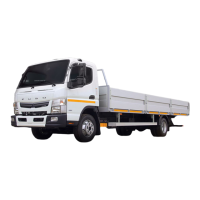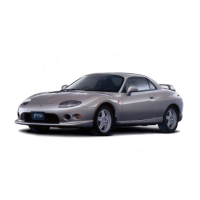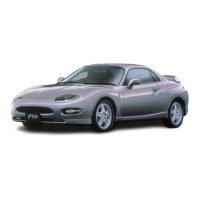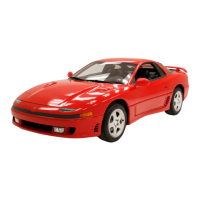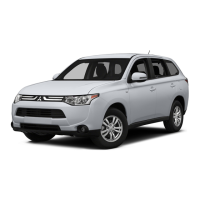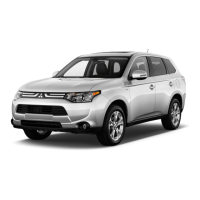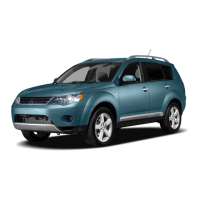7-10 Starting and driving
• Never coast downhill with the gearshift lever in
neutral (manual transmission vehicles) or the
range selector lever in the “N” position (auto-
matic transmission vehicles). Doing so makes
both engine braking and exhaust brake inopera-
tive, which in turn excessively burdens the ser-
vice brakes. This also causes the brakes to
overheat and the brake linings to wear out pre-
maturely.
In an automatic transmission vehicle, this can
also cause damage to the transmission.
• Avoid overusing the service brakes as the
resultant overheating could cause undesirable
vapor lock and fading, both of which contribute
to poor braking.
NOTE:
• “Vapor lock” refers to the condition in which the
brake system overheats, causing the brake fluid
to boil and form bubbles that weaken hydraulic
pressure, resulting in poor braking.
• “Fading” refers to the condition in which the
brake linings or brake pads overheat to the point
where friction is significantly reduced. This also
results in poor braking.
• First decelerate the engine sufficiently before
downshifting.
Downshifting more than two gears at a time or
downshifting at a high engine speed could
cause the engine to overrev.
Decelerate, as a rule, to roughly 2,000 rpm
before downshifting, and pay attention not to let
the needle enter the red zone during driving.
In an automatic transmission vehicle, shifting
down will be prohibited by a safety device if the
vehicle is driving fast. In such cases, depress
the brake pedal and reduce the vehicle speed.
NOTE:
“Overrev” refers to an operating state of the engine
in which it rotates at an RPM higher than the recom-
mended maximum RPM. Overrevving the engine
could lead to an engine failure.
WARNING
Except in an emergency, never apply the
parking brake while the vehicle is moving
since the vehicle could spin and/or overturn.
Z11321
FEFG.book Page 10 Thursday, March 10, 2005 7:30 PM

